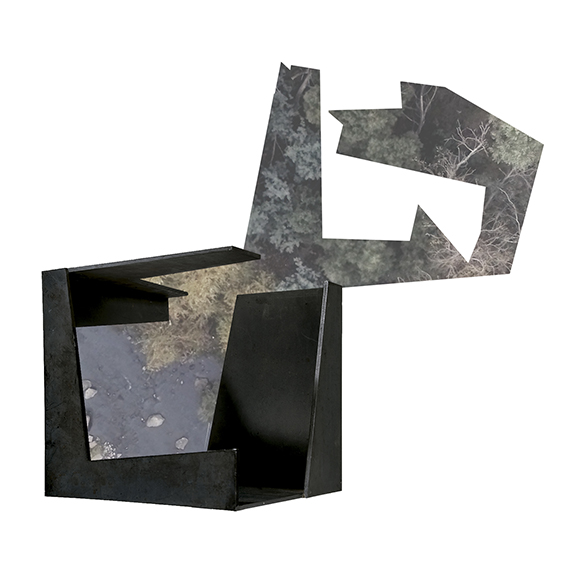Studio C/07
The Broken Box
Guillermo Rojas-Alfaro

Studio Description
Essence is the fundamental concept of Western thinking (Han, 2019). Essence is what constitutes a thing. It is what endures change and perseveres. Essence is what makes a tree different from a bird, and that bird different from a river. It is also what makes a building different from the street in front of it, from its furniture, the wind running through its windows or the people enjoying that wind.
Such definitive distinctions are not common in Indigenous Knowledge. According to Yunkaporta (2019), the relationship of Indigenous cultures with reality is not one of domain but of symbiosis. For him, this relationship is only possible if we realise the interconnectedness of things.
This studio challenges the common understanding of an architectural design as a discrete and finite piece, as a —metaphorical— box that delimits private from public, inner from outer, stable from unsettled, etc. Aiming to break that box, this studio encourages you to think of a design as a constellation, as a relational piece where environment, matter, space and people are in constant and fluid interconnection.
You are asked to design a place for Indigenous performance arts at Green Reserve, next to Merri Creek. This unsteady space should accommodate a small audience for indoor performances, unfold for larger outdoor ones and disappear when the artists are not using it. You will define the scale and boundaries of a design that seeks to incorporate and be incorporated into its context.
Studio Outcomes
Two conditions are critical to this studio.
First, it relies on an exhaustive and experiential comprehension of the project’s context. This is not an abstracted account of the site’s quantitative aspects —its form, dimensions, sizes, etc.— but of perceptual, and hence, relative and diffuse qualities that arise through deep and continuous in-site observation. Among these are the context’s spatiality and scale; its light, air and soundscape; its natural and built components and their materiality; the actions of people there and their rhythms and moods; and the shifting interconnections between all these in unison.
Second, it relies on design methods, aims and techniques that delay the definition of projects. You will engage with unproductive processes —from the Latin producere: to exhibit or make visible—to envision architectural designs that are undifferentiated from their context. And as these processes are oriented to explore rather than to delimit, your designs will be hybrid and entangled. They will not be beautiful. They will not be consistent, unified or essential either.
The outcomes of this studio refuse the closedness of an essence. They cannot be defined or objectified. The outcomes of this studio cannot be reduced to a diagram or icon. As they are one with their context, it is impossible to know what they are, nor where they start or end —if they do.
Studio Leader/s
Guillermo Rojas-Alfaro is an architect, creative researcher, and academic with over a decade of experience leading design studios in Australia, Europe and South America. Before moving to Melbourne, Guillermo was the Head of PUC’s Cultural Heritage Programme and directed GRA Architecture, a practice focused on the adaptive reuse of industrial heritage sites. His work has been internationally published, awarded and showcased in various exhibitions, including the Venice Biennale. He currently keeps an active presence as an independent practitioner trading between art and architecture and leads the MArch intensive Making the Invisible Visible, which stems from his PhD research.
Readings & References
Bolt, B. (2010). Art Beyond Representation: The Performative Power of the Image. London: I.B. Tauris & Co.
Han, B.-C. (2023). Absence (D. Steuer, Trans.). Oxford: Polity Press.
Kuma, K. (2008). Anti-object (H. Watanabe, Trans.). London, England: Architectural Association Publications.
Pérez-Gómez, A. (2016). Attunement: architectural meaning after the crisis of modern science. Cambridge, Massachusetts: The MIT Press.
Van Schaik, L. (2021). Doing, seeing; Seeing, doing. Melbourne: URO Publications.
Yunkaporta, T. (2019). Sand Talk: How Indigenous Thinking Can Save the World. Melbourne: Text Publishing
Schedule:
Monday 12pm-3pm in MSD 140 & Thursdays 3:15pm-6:15pm in MSD 141
ABPL90437 Design Studio C is an early-start subject. The ballot is held online at the beginning of O-week, opening on Monday 19 February and closing the morning of Tuesday 20 February. There is some preparatory online work to be completed during the week. Teaching begins with an all day, in person, compulsory Symposium on Friday 23 February.
Off-site Activities: